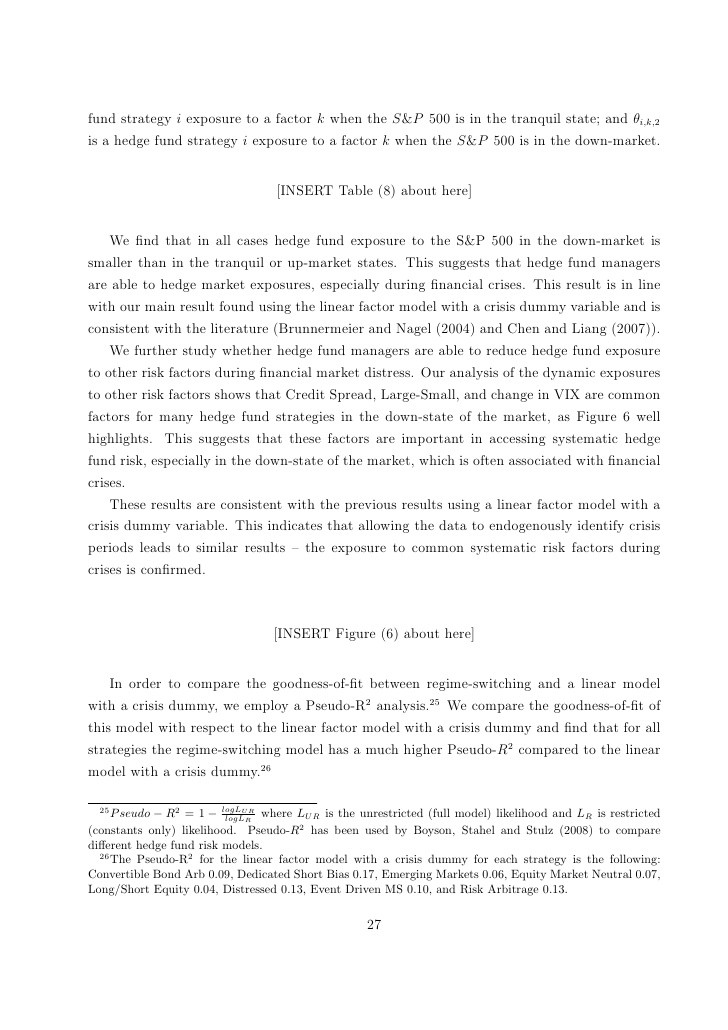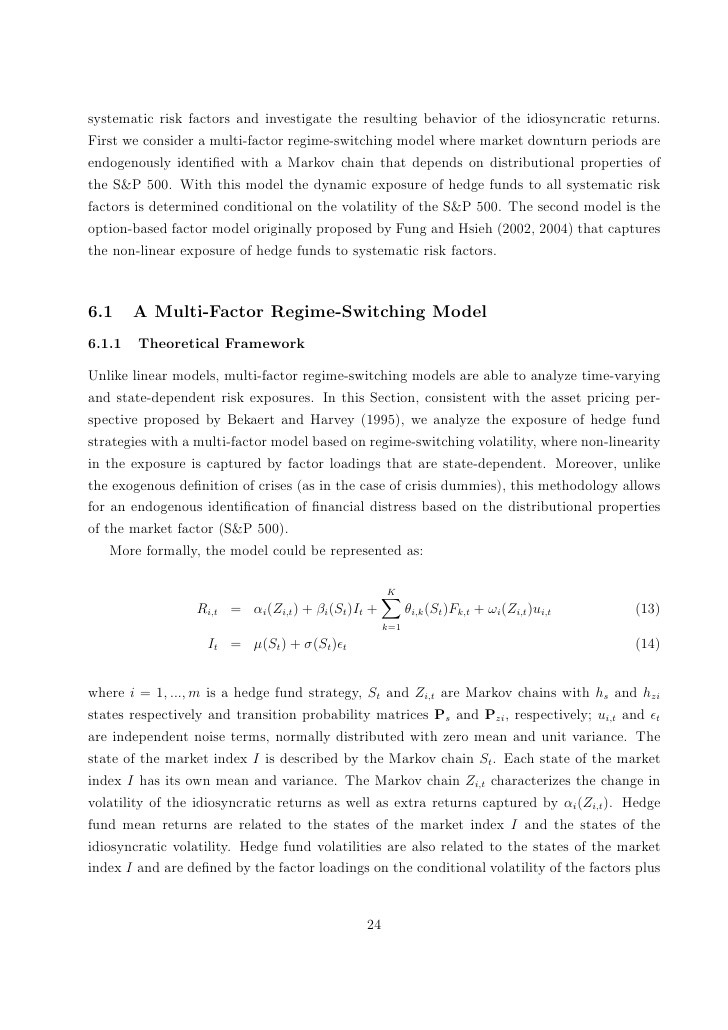Lessons from Lehman Hedge Funds and Redemption Risk
Post on: 16 Март, 2015 No Comment

Many hedge funds relied on Lehman Brothers for prime brokerage services, such as custody, clearing, securities lending, financing, and a variety of operational support functions. When Lehman Brothers filed for bankruptcy, the assets of a number of these hedge funds that were under Lehmans custody were wiped out or frozen. As result, several of these hedge funds may be on the verge of collapse. Such an event could result in substantial losses for the funds limited partner investors.
For those investors whose funds are or may be caught in Lehman Brothers, there are several issues to focus on at this time. Those investors who are fortunate enough to have avoided the Lehman trap should pay attention to these same issues as other major prime brokers struggle to avoid Lehmans fate. Finally, amidst the market crash, hedge fund redemptions will continue to be a major market story into the first quarter of 2009.
The Lehman Problem
Many hedge funds had significant amounts of assets held by Lehman Brothers and its various affiliates and subsidiaries. According to some estimates, some hedge funds had as much as 20-70 percent of their assets held by now-bankrupt U.S.-based Lehman Brothers, Inc. pursuant to a prime brokerage agreement. Many funds also had margin lending agreements with Lehman Brothers International, a FSA-regulated entity in the United Kingdom, which is currently under administration. As Lehman Brothers, Inc.s bankruptcy proceedings in the U.S. and the FSA-approved administration of Lehman Brothers International in the U.K. freeze the companies assets, many hedge funds are discovering that they are now creditors hoping to recover their assets. In the case of those hedge funds that had margin-lending agreements with Lehman Brothers, the recovery of assets is further complicated by the fact that many of the assets that funds invested with Lehman Brothers have been rehypothecated, by Lehman Brothers, meaning that Lehman Brothers had a right to use those assets and may have lent them to other investors, thereby terminating the hedge funds proprietary rights in those assets.
Whether hedge fund investors have a claim against the fund manager for getting caught in the Lehman trap is a matter of some debate. The outcome will be driven primarily by the specific facts concerning each managers knowledge and conduct leading up to Lehman Brothers bankruptcy, and each funds limited partnership agreement. Investors will likely have a heavy burden in proving any liability on the part of the manager for getting caught in Lehman, because many limited partnership agreements require investors to prove, at a minimum, gross negligence on the part of the manager.
Nevertheless, it may be easier to meet this burden in the case where the manager is a related party to the prime broker and the full implications of that relationship have not been previously consented to by investors. For example, many managers have established procedures under the governing documents to resolve conflicts of interest that usually require the approval of an independent advisory committee. If the manager knew of problems facing its related prime broker but, due to its own self-interest, failed to act and that inaction was not blessed by such an advisory committee, this may help to establish gross negligence on the part of the manager.
Additionally, hedge fund managers continue to owe fiduciary duties to their investors even after an event like the Lehman Brothers bankruptcy. Investors must focus on these post-event actions to avoid further destruction of value and unequal treatment among investors. To assist investors, we have identified the following issues, all of which are inter-related and have broad application to hedge funds generally.
First, and most importantly, limited partners should demand some information about the status of their hedge funds. If a hedge fund used Lehman Brothers for prime brokerage services, investors should ask the investment manager whether any assets of the fund have been frozen. If assets are frozen, investors should seek some explanation of the type and status of the assets. For example, investors need to know whether the assets were segregated (which may increase the likelihood of a full recovery) or whether they were commingled with Lehmans assets (which would decrease the chances of a full recovery). Investors should also inquire as to the percentage of the overall fund that was exposed to Lehman.
The timing of Lehmans bankruptcy in the middle of September created substantial redemption risk for both redeeming investors and non-redeeming investors. Because September 30, 2008, marked the end of the quarter, when many funds were facing redemption requests, the question for investors is whether the fund manager complied with redemption requests and, if so, on what basis the manager arrived at the value of the fund. Redeeming investors may have received more than they were entitled to, relative to their investment in the fund. If so, they may face the unhappy prospect of having to repay a portion of their redeemed capital. Non-redeeming investors must be vigilant to ensure that they were treated fairly in valuation matters both quantitatively and qualitatively.
Investors should have confidence in the marked values of a funds assets. Valuation takes on even greater importance during redemptions because, from a qualitative perspective, all investors must have confidence that the manager did not excessively deplete liquid assets to meet redemption requests, while leaving the fund with less liquid and harder to value assets. While this balance may be difficult to achieve in a frozen market, investors should not simply accept broad statements that portfolio losses are justified because valuation is difficult or subjective. Nor should investors simply accept the managers valuations placed on illiquid assets. Managers must take reasonable steps to ascertain fair value, including, if appropriate, retaining valuation experts.
Additional Complications
Many of the limited partnership agreements that establish the rights and obligations of investors and the hedge fund manager contain additional complications. For example, many hedge funds provide enhanced redemption rights to lead investors, meaning that those investors can redeem with less notice than the average investor. Similarly, many limited partnership agreements provide for the creation of side pockets that allow the manager to segregate certain assets (such as hard-to-value assets). In addition, many limited partnership agreements empower managers to suspend some or all redemptions. These so-called gates are typically closed when the act of redeeming investors capital could have a material adverse impact on the fund. Each manager and investor should review each partnership agreement to
determine their precise rights and obligations.

High-Water Mark
The high-water mark may provide a good justification for remaining in a fund in a down market because it can create a discount on alpha. Most hedge funds require the manager to exceed the high-water mark on performance before the manager can resume sharing the funds profits. Thus, if a fund is down 10 percent from its high-water mark, investors dont have to share any profits on gains until the fund exceeds the high-water mark. If a fund has a strong track record, but is in the midst of a down year with performance that tracks the major market indices, investors may consider remaining in the fund to get a discount on the managers future performance. Put differently, if an investor withdraws and invests in another fund, the investor will pay performance fees on any investment gains from the date of investment.
Fiduciary Duties
While a hedge fund manager generally owes fiduciary duties to the limited partner investors, many limited partners (and their own managers) are themselves fiduciaries. As such, these investors must be vigilant in overseeing their investments in hedge funds. Where a hedge fund investment results in material losses, all fiduciaries both hedge fund managers and investors must be prepared to establish that they fulfilled their fiduciary duties.
A manager, as general partner, owes the traditional fiduciary duties of loyalty and care to the limited partnership and its limited partners/investors, but this duty may generally be modified or enhanced in the written agreement governing the limited partnership (and related written documents). However, where the partners have not expressly made provisions in their partnership agreement or where the agreement is inconsistent with mandatory statutory provisions, courts generally look for guidance from the statutory default rules, traditional notions of fiduciary duties, or other extrinsic evidence. Courts may follow a legal trend that, in the zone of insolvency, directors must act in good faith to balance interests, weighing potential costs and benefits to all stakeholders, i.e. owners and creditors. The key to reducing possible legal exposure in a deepening insolvency situation is to remain proactive when there are signs of financial distress. Like directors, in these situations, managers should examine all possible opportunities and alternatives, and consult with financial advisors, lawyers, and other professionals to evaluate the funds situation early in the process to best insulate against breach of fiduciary duty claims.
This is one in a series of alerts addressing the 2008 bailout legislation and the nation’s current credit crisis. To view related alerts, and to see how Nixon Peabody can help you anticipate and respond to the challenges and opportunities facing businesses in these uncertain
times, please visit our Financial Recovery Team website page.














